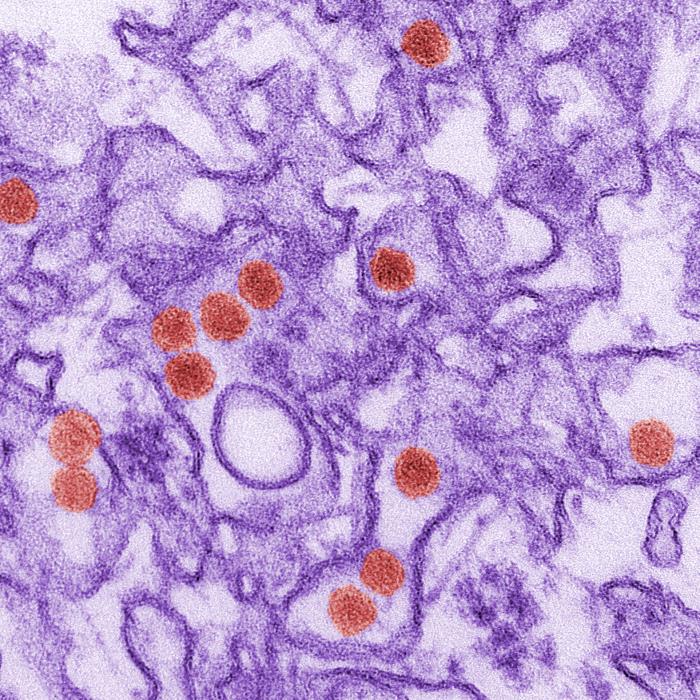Texas A&M confronts reemerging and tropical diseases at annual health care conference

Once thought to be on the brink of eradication, certain infectious and tropical diseases are emerging among the general population due to complacency, the increase of affordable air travel, antimicrobial resistance and vaccine hesitancy. Diseases such as murine typhus and meningitis, along with emerging infections such as Zika, challenge medical professionals to find innovative methods of diagnosis and treatment.
The Texas A&M Coastal Bend Health Education Center seeks to address the educational needs of providers in South Texas by presenting the Tropical and Infectious Disease Conference annually in Corpus Christi. The 2017 conference was held April 21 and 22 and provided physicians and other medical professionals with the knowledge they need to identify and treat these diseases.
“The purpose of this conference was to educate the health care professional about some important infectious diseases that impact Texas, along with methods of diagnosis, treatment and prevention with the most up-to-date information available,” said Michael Bullen, MD, clinical infectious disease specialist, a fellow of the Infectious Diseases Society of America (FIDSA), and the conference’s course director.
The climate, a large immigrant population and high poverty levels in South Texas create the perfect environment for the spread of tropical and emerging infectious diseases. Bullen said medical professionals have been able to control some infectious diseases while “many others seem to stay one or many steps ahead.”
Physicians and other health professionals need to be able to identify the symptoms of reemerging and tropical diseases, as well as treat them, because they can mimic other conditions and symptoms. Couple that with antimicrobial resistance and improper diagnosis, and the knowledge gap remains wide open. This conference attempted to close that gap by discussing the infectious diseases common to the Coastal Bend region, proper methods of diagnosing these diseases, and the new technology and methods to control, treat and contain the spread of these illnesses.
The event included a keynote address by Herbert L. DuPont, MD, FACP, FIDSA, a renowned infectious disease epidemiologist, who discussed how the human body’s own bacteria can be harnessed to treat various medical problems.
“The intestinal microbiome is a powerful factory of bacteria producing chemicals that control health and produce disease,” DuPont said. “Clostridium difficile (C-diff) infection is the most important cause of hospital-acquired infection in the United States, resulting in 29,000 deaths. All physicians need to know how to diagnose and treat this disorder, which tends to recur and can cause chronic suffering and death.”
DuPont, the director for the Center for Infectious Disease at the University of Texas School of Public Health, said C-diff infection is becoming a hospital crisis “because half of the patients in a hospital are receiving antibiotics that deplete their intestinal microbiome diversity, and spores of C-diff are found in the hospital environment.” He said this creates a “perfect storm” for the infection to spread and cause recurrent disease and death.
Carrie L. Byington, MD, dean of the Texas A&M College of Medicine, senior vice president of the Texas A&M University Health Science Center and vice chancellor for health services at The Texas A&M University System, presented her research on molecular detection of respiratory viruses. Working with BioFire Diagnostics, Byington helped develop FilmArray, a rapid test that can distinguish viral infections from bacterial and even parasitical ones. The technology is now used in thousands of hospitals around the world.
“Knowing what virus or bacteria is causing the illness is essential for both proper treatment and helping to stop the spread of anti-microbial resistant bacteria,” said Byington, who also chaired the U.S. Olympic Committee’s Infectious Disease Advisory Group, where she worked to protect American athletes from the Zika virus. “Especially in South Texas, where emerging infectious diseases like Zika are currently spreading, technology like this becomes all the more important.”
Other conference topics included murine typhus in South Texas, a comprehensive review of the Zika virus and Congenital Zika Syndrome, pediatric tuberculosis and a discussion on the roots of vaccine hesitancy. There was also a talk given on ethical and legal ramifications of serious medical errors.
The conference, which is an initiative of Texas A&M’s Healthy South Texas, counted toward health professional’s continuing education requirements.
“The event highlights the value of the Coastal Bend Health Education Center and the Healthy South Texas program, two important initiatives of the Texas A&M Health System,” Byington said. “The conference will arm health care professionals in South Texas and beyond, with knowledge of the emerging infectious diseases that pose a threat to this critical region of the state. At Texas A&M Health Science Center we are proud to provide this opportunity for medical professionals to learn from each other about the newest threats and how to help prevent the spread of these diseases, in order to preserve the health of their patients and the residents of the state.”
Media contact: media@tamu.edu


